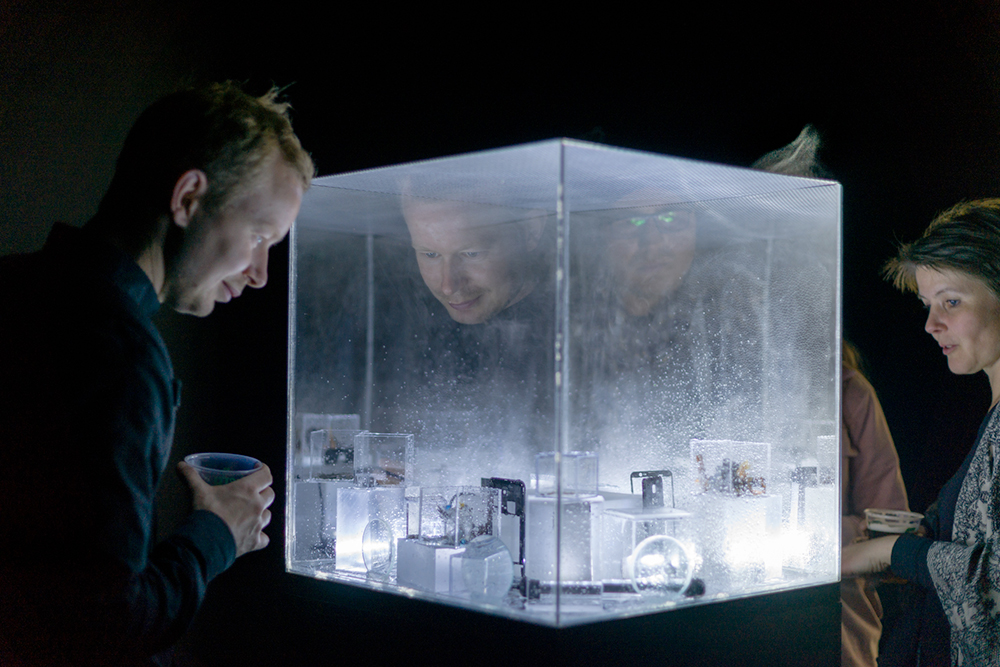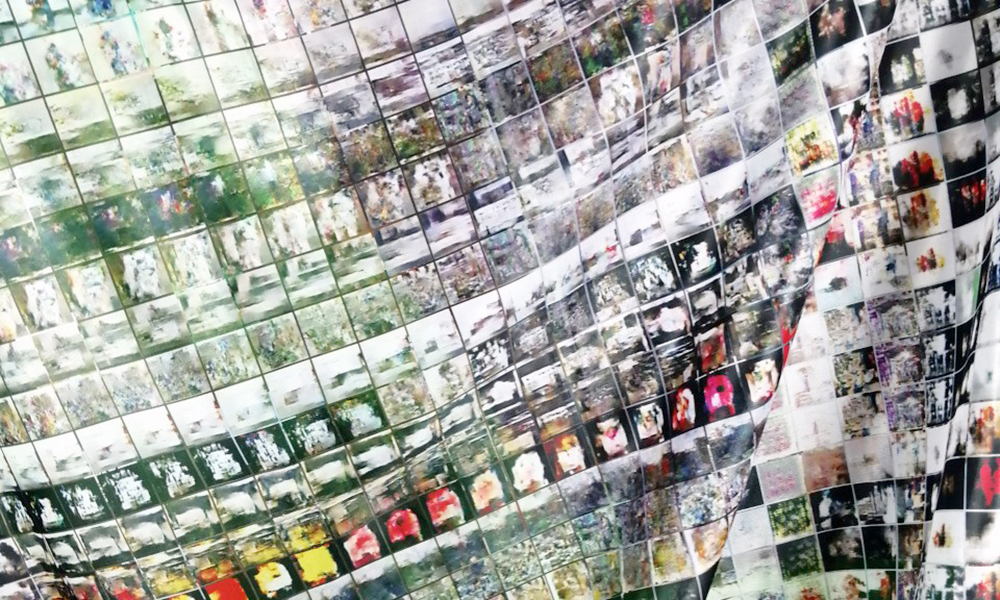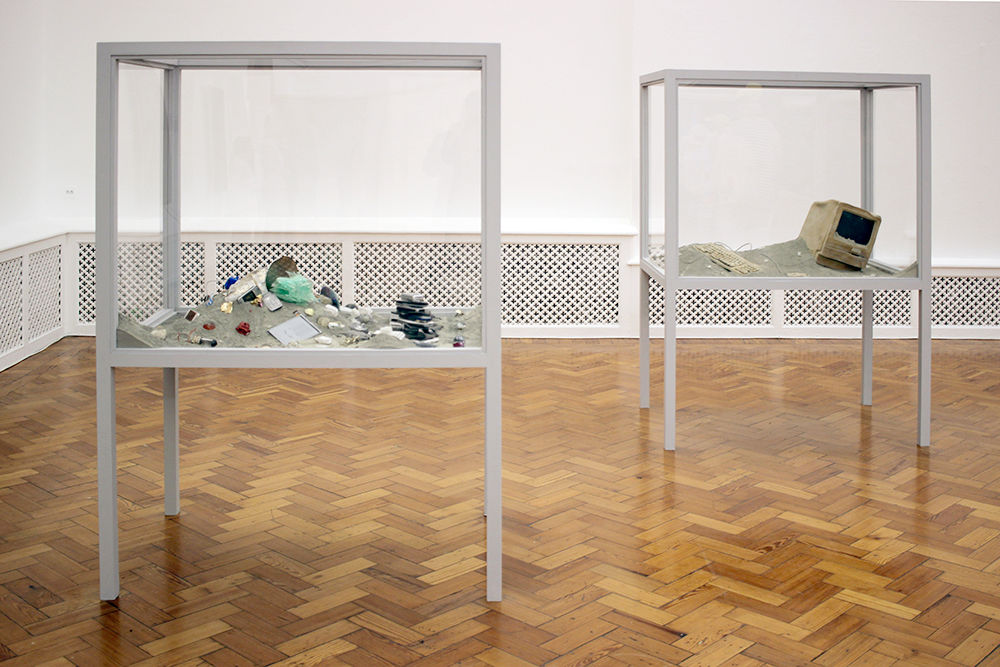Rosemary Lee: Resilience as a Critical Approach to Technology
Published 17 June 2021 by Rosemary Lee
On the occasion of the end of a cycle of the Feral Labs Network — a Creative Europe cooperation programme co-funded by the European Union (2019-2021) — and the release of the associated publication “Feral Labs Node Book #1: Rewilding Culture”, Rosemary Lee proposes an essay on resilience as a critical approach to technology.
This essay considers how approaching the theme of resilience from a critical perspective on technology offers insight into technology’s capacity to respond to the complexity of the world. This perspective addresses the fact that technology tends to reveal certain intricacies of the world, for example, by providing solutions to one problem while opening a host of difficult-to-foresee side-effects, ethical dilemmas, and unintended consequences. And while critical perspectives on technology may offer crucial insights into and objections to various aspects that arise in that regard, discourse surrounding technology shows a tendency to streamline highly complex issues into black-and-white contrasts. This inclination towards oversimplification does not do justice to either understanding the intricacies that technologies typically entail, nor to the intention of assessing the potential faults that may arise from the use of a given technology. Proposing the theme of resilience as a lens through which to approach technology in a critical light seeks to address the unpredictable, complex, and heterogeneous contexts to which critically focused art, design, and technology respond.
Resilience in Design
The word “resilience” entails the endurance to withstand and to overcome the challenges and obstacles which present themselves, not only in the short term but also in the long term. This requires balancing between specificity and generality, as the qualities that make something especially suited for one purpose or context may not necessarily be helpful if those conditions were to change. To illustrate how design may be made to respond to the specific challenges posed by real-world situations, it can be helpful to think about this in terms of simple tools. For example, the affordances of one device may make it especially suitable to the execution of a narrow task or range of tasks that it is intended to perform.

A can-opener, for instance, is well-suited for opening cans, but it’s not especially useful for the performance of other tasks. In contrast to a can-opener, a more multi-purpose tool, such as a pocket-knife, has a wider range of affordances that happens to include opening cans, although opening a can with a pocket-knife may be more difficult than using a can-opener. The circumstances at hand may render one of these tools may be more suitable than the other, but in the case of uncertainty about the potential needs one may have, a pocket-knife would likely be a better “desert island” choice of tool, as it keeps more options open. This simple example demonstrates how the relative specificity of a tool may respond to the uncertainty of the world, and how those conditions in turn shape relevant aspects of how we view a given tool.
Extending this idea to technology helps to think about how certain technologies or design solutions may offer greater capacity for resilience, providing potential solutions for various problems in a changing world. Considering this conundrum, that the design of technology must respond to a world in flux, enables us to recognise that technologies do not solely provide solutions. They also have the capacity to bring with them their own set of challenges, even creating new problems in the process of solving others. And it is possible, even common, for a given technology to have a quite diverse potential beyond the parameters of its initial conception, because the eventual ramifications of technology are not necessarily pre-defined, nor set in stone at the design stage.
While some technologies have questionable ethical groundings from their inceptions, this does not indelibly taint such technologies. On the other hand, good intentions do not ensure favourable outcomes. Even technologies built with presumably virtuous aims may have dire, albeit unintended, outcomes. As Don Ihde (1) points out, technology has the potential to impose its own interpretation, intentionality, and influence on the situation, process, or context it is applied to. It is therefore important to understand technology as non-neutral and ethically mutable, inclined to change based on the variability of the contexts in which it is designed and applied.
Drawing from my own research into the increasing presence of machine learning (ML) — and more generally, artificial intelligence — in media and in discourse surrounding technology (2), I find that the importance of adopting a critical stance towards technology is underscored by a historical tendency to treat such approaches as far more straightforward than they indeed are. This is merely one area of the many issues relevant to the role of technology, presently, but being more specific, rather than speaking of technology only in general terms, enables us to better examine what is at stake in such discourse. It also allows us to unpack aspects of how diverse ideas and historical influences may be carried with a particular technology, intentionally or not.
ML is a good example of the ethical mutability of technology, and it is especially relevant currently, because of its growing influence as an approach within diverse contexts, for its ability to capture the popular imagination, and because it is particularly emblematic of how polarising discussions about technology tend to be. ML may, on the one hand, offer the potential for new solutions to problems, but it has also proven to be equally capable of creating new problems, with a great potential for bias, error, and manipulation. ML has enabled the personal data of countless individuals to be sold and used to in turn engineer highly manipulative and invasive new forms of media.
It has been used to track, to coerce, and to commodify human behaviour in unprecedented ways and at an unprecedented scale. ML has also consistently been proven to replicate and even accentuate existing biases and imbalances of power, such as the numerous instances where ML systems have shown tendencies towards racial and gender bias (3). In contrast to these problems, ML may also be used for more promising applications, such as developing new tools and methods for medical diagnostics (4), managing the massive amounts of data with which we are confronted on a daily basis, or creating art.
Far from being clear-cut, the benefits, limitations, and drawbacks of current explorations with ML demonstrate how subtle differences in approach, in method, or in context may have radically different outcomes. The positive potential of ML certainly does not cancel out its capacity to do harm, nor should this be expected of technology. Instead of rejecting ML indiscriminately as inherently detrimental or hailing it as an answer to many of the world’s problems, it is important to closely examine its defects and its potential to do harm in balance with its competencies and potential benefits. Failure to adequately account for the intricacies of technology risks the potential of being caught off guard by them.

ML is also interesting for this exploration of resilience because of its historical ties to other fields and their complex webs of associated ideas. It is now situated within the larger field of artificial intelligence, which in turn emerged from cybernetics. These historical origins continue to colour the development of this area of research, whether or not such ties are overtly acknowledged. The approach of cybernetics involves the comparison of various kinds of systems, biological, ecological or technical, with the intention of learning from parallels and differences between them. Comparing the human brain to a digital computer, for example, enables us to think about the related functions of each of these in new ways.
Despite the benefits that cybernetic perspectives provide for cross-disciplinary explorations, problematic assumptions from early in the history of cybernetics research continue to influence approaches such as ML and artificial intelligence, which have come in its wake. For example, human bodies and labour are typically instrumentalised in cybernetic views, where individuals are treated as replaceable, interchangeable, like cogs within a larger mechanism. Technologies descendent from cybernetics also frequently espouse belief in the impartiality of technical processes, which stands in direct contrast to the commonplace proof of error, bias, and potential for manipulation that algorithmic approaches entail. These issues reflect common world views contemporaneous to the development of cybernetics, in the middle of the 20th century, which are extremely outdated at this point, yet often escape direct scrutiny, because they are embedded in approaches to technology and are therefore difficult to extricate.
Yet, while the troubled history of cybernetics continues to haunt ML, artificial intelligence and their surrounding narratives, much can be gained from considering technology from perspectives influenced by cybernetics. To think about technology in terms of heterogeneous systems and in terms of ecology is certainly helpful to understanding its complexity. Because technology does not exist, nor operate, in a vacuum, contextual factors are highly relevant, which often necessitate a holistic view in order to be fully grasped. We may thereby consider how technologies participate in a media ecosystem made up of diverse elements and processes. Instead of fixating solely on the intended purpose of the technology or its actual effects on a given milieu, it is possible to consider these together to develop a more comprehensive view.

The Current Relevance of Resilience
Addressing the theme of resilience, currently, feels impossible without also addressing the present global context with which we are confronted. “Resilience” is a word that very much captures the spirit of the year 2020, but it also speaks to issues that pose enduring challenges to society on a broad scale. Calling attention to this idea is also a reminder of how interconnected the globalised world is. This means that not only does each individual have an impact on the world at large, but that they are also to a degree responsible to or for that world. Not only do we reside here, we shape the world with our presence in it.
In 2020, several factors exposed faults that had not necessarily been visible before: in systems; among people; and between the various expectations that would ordinarily maintain stability. Virtually no one—and no area of life—has been untouched by the resounding impact of the pandemic. In addition to the global health crisis, political divisiveness and unrest, the viral spread of false information and vitriol, growing financial and social inequality, and a state of near-constant uncertainty have tested the resilience of the structures that were built to enable us to endure such struggles.
But 2020 has not been without its positive notes. Some have found solace in slowing down. People have found new ways of being together and being apart. And for better or for worse, there has been greater dialogue about numerous difficult issues, which had previously remained unarticulated. Scientists are currently studying how ecosystems and species may have been impacted in various ways by changes in human behaviour (5). For example, there has been speculation about the potential environmental impact of decreased air traffic. Other effects have also been observed, such as one species of birds decreasing in numbers because of reduced presence of humans, which surprisingly left the birds more vulnerable to intimidation of other predators (6). The extent of the world’s dynamic qualities, which is demonstrated through the interconnected effects of the pandemic, serves as a reminder of the importance of structures that facilitate resilience.
Technologically Engaged Resilience
Critical examination of technology offers new ways of thinking about and using technology in a more dynamic way than perspectives that expect straightforward, black-and-white conclusions. It is all too common for discourse on technology to treat the object of study as though it is fixed, homogeneous, or intrinsically corrupt. There is also a tendency for even supposedly critical examinations of technology to merely parrot assertions about a given technology without conducting genuine scholarship to back up those claims. While they may voice valid concerns and criticisms, such approaches are not as substantial as they purport to be.
This makes the grave error of failing to account for the fact that technologies tend to rather be dynamic, heterogeneous, and highly subject to the influence of the contexts and ways in which they are applied. It also often imposes generalisations, assumptions, and moralistic judgements upon technologies without actual scrutiny of the technologies in question. For these reasons, a critical stance towards technology with technology instead of against it is essential. While “critical” may appear, at least superficially, to be “anti-”, this is not the case. In fact, to truly understand something, whether from a critical standpoint or not, it is necessary to approach it without imposing preconceived judgement upon the object of study.
Considering technology in terms of resilience—in contrast to views which pose it as either an answer or a problem in itself—enables greater exploration of the grey zones that arise from many forms of technology. Approaching technologies in this way enables us to assess their potential benefits in relation to the potential consequences they may bring with them. This view advocates treating technology in a holistic manner, which is sensitive to nuance. While it may be tempting to write off particular technologies wholesale for the issues they entail, that would mean to overlook the inherent complexity of the world, in response to which such technologies have ultimately emerged. Grasping this intricate entanglement between the contexts and conditions that technologies propose to address or improve and the actual effects they give rise to, helps us to better understand how a technologically engaged form of resilience could operate.

Conclusion
The examples and ideas covered here develop the idea of how technology can be made to embody a kind of critical, technologically engaged resilience. Rather than purely solving a design problem, technology may be used to understand that problem better and to work with it to make a system more robust. And instead of considering technology separately from the various contextual factors that shape it, we understand how important it is to also address situational aspects of technology. Emphasizing critical perspectives on technology responds to the fact that even inventions with great potential to enact positive change may prove harmful if they are implemented in a particular manner, context, or to too great an extent.
Through close—and critical—examination of the issues associated with a particular technology or technological approach, it is possible to develop tools and methods that apply the benefits it offers, while mitigating the potential negative side-effects involved. As described previously, criticality does not necessarily entail the negation of technology. Instead, it requires adopting an approach that is open to the subtleties of the subject matter. It would be dangerous to assume that one approaches from neutral ground. There are many factors involved in technologies and their various surrounding contexts, but the perspectives of practitioners, users, and observers also impose their own constraints upon how a given technology in fact plays out. Much as one-size-fits-all approaches to technology tend to be unsuccessful at achieving their intended objectives, it is important to recognise that similarly straightforward ways of understanding technology may also fail to grasp the complexity of the actual situations they claim to address.
This exploration of how the theme of resilience may offer useful ways forward in thinking about technology seeks to engage critically with the multifaceted nature of both technology and the world it responds to. Technology may facilitate greater resilience to the challenges we find ourselves faced with, and the concept of a technologically aided resilience also helps to understand the complex character of technology itself. Not only does embodying a technologically engaged resilience require solutions for the problems most immediately at hand, it also demands a sustainable perspective as to how such interventions may play out in the long run. This necessitates adaptability, attention to nuance, and most importantly, critical engagement with context.
(1) Ihde, Don. ”Program One: Phenomenology of Technics”. In Technology and the Lifeworld: From Garden to Earth, 72–123. Bloomington & Indianapolis: Indiana University Press, 1990.
(2) Lee, Rosemary. “Machine Learning and Notions of the Image”. IT-University of Copenhagen, 2020.
(3) Buolamwini, Joy, and Timnit Grebru. “Gender Shades: Intersectional Accuracy Disparities in Commercial Gender Classification”. In Proceedings of Machine Learning Research, 81:1–15, 2018.
(4) Richens, Jonathan G., Ciarán M. Lee, and Saurabh Johri. ”Improving the Accuracy of Medical Diagnosis with Causal Machine Learning”. Nature Communications 11, no. 1 (11 August 2020): 3923.
(5) Rutz, Christian, Matthias-Claudio Loretto, Amanda E. Bates, Sarah C. Davidson, Carlos M. Duarte, Walter Jetz, Mark Johnson, et al. ”COVID-19 Lockdown Allows Researchers to Quantify the Effects of Human Activity on Wildlife”. Nature Ecology & Evolution 4, no. 9 (1 September 2020): 1156–59.
(6) Giaimo, Cara. ‘Covid-19 Kept Tourists Away. Why Did These Seabirds Miss Them?’ New York Times, 22 January 2021, sec. Science.
Rosemary Lee is an artist and media studies researcher. Lee recently completed her PhD at the IT-University of Copenhagen, examining how machine learning influences artistic practice and ideas surrounding the production of images.
Visit Rosemary Lee website
Download the publication: Feral Labs Node Book #1: Rewilding Culture.
The Feral Labs Network was cofinanced (2019-2021) by the Creative Europe program of the European Union. The cooperation was led by the Projekt Atol Institute in Ljubljana (Slovenia) with the Bioart Society (Helsinki, Finland), Catch (Helsingor, Denmark), Radiona (Zagreb, Croatia), Schmiede (Hallein, Austria) et Art2M/Makery (France).

